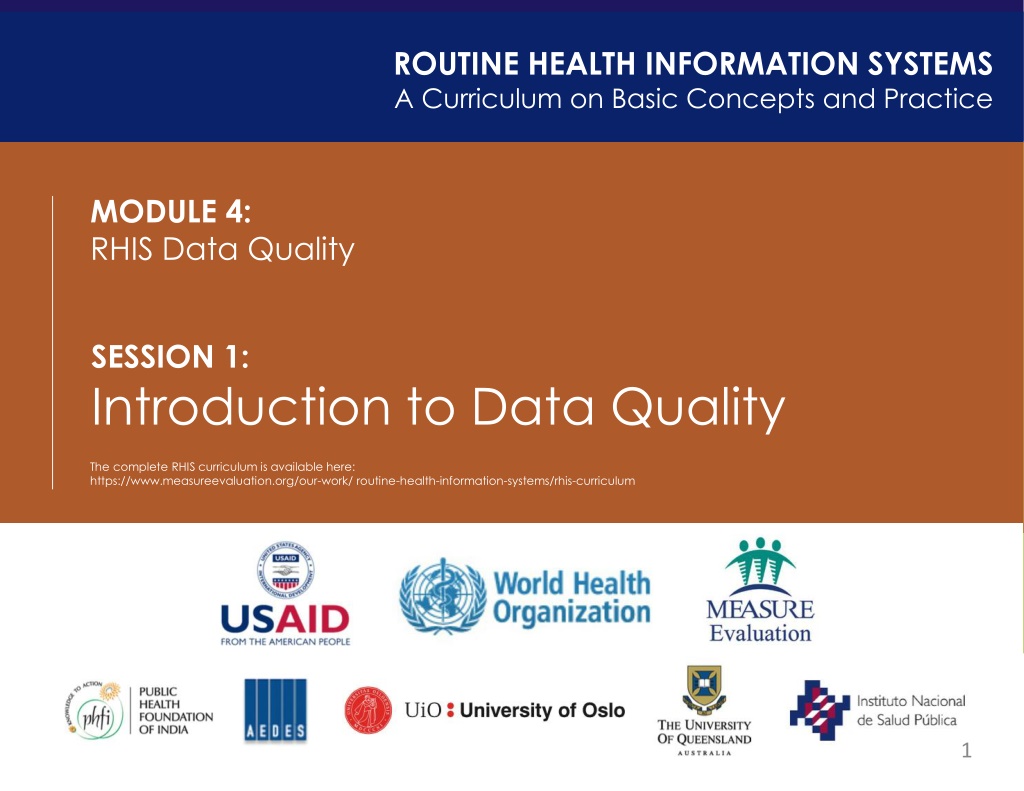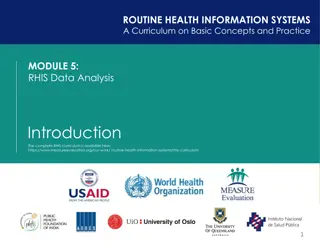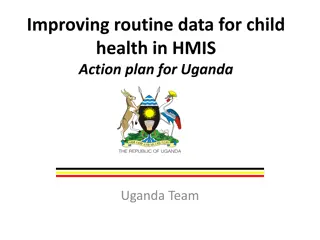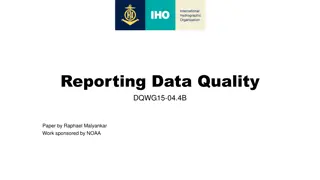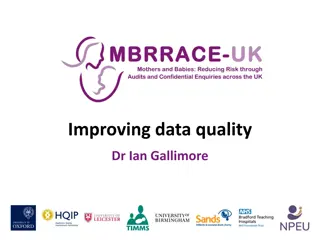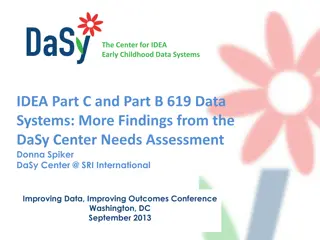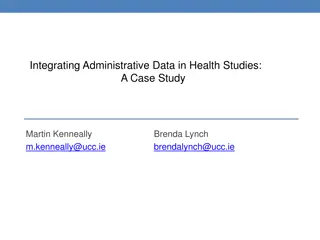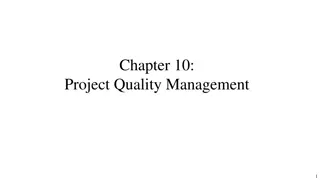Understanding Data Quality in Routine Health Information Systems
Data quality in routine health information systems is crucial for accurate decision-making and planning. This module covers the conceptual framework, dimensions, and metrics of data quality, along with common threats and types of data quality problems. High-quality data enable accurate assessment of health needs, efficient resource allocation, and effective monitoring. Recognizing symptoms of data quality problems is essential for ensuring data reliability and usability in healthcare settings.
Download Presentation

Please find below an Image/Link to download the presentation.
The content on the website is provided AS IS for your information and personal use only. It may not be sold, licensed, or shared on other websites without obtaining consent from the author. Download presentation by click this link. If you encounter any issues during the download, it is possible that the publisher has removed the file from their server.
E N D
Presentation Transcript
ROUTINE HEALTH INFORMATION SYSTEMS A Curriculum on Basic Concepts and Practice MODULE 4: RHIS Data Quality SESSION 1: Introduction to Data Quality The complete RHIS curriculum is available here: https://www.measureevaluation.org/our-work/ routine-health-information-systems/rhis-curriculum 1
Learning Objectives and Topics Covered Objectives Understand the data quality conceptual framework Become familiar with the dimensions and metrics of data quality Understand what different RHIS management levels can do to ensure data quality Identify the main types of data quality problems Topics Covered Define data quality Link between data quality and quality assurance Data-quality conceptual framework Metrics of data quality Common threats to data quality 2
What Is Data Quality? Data quality is often defined as fitness for use. What does this mean? Data are fit for their intended uses in operations, decision making, and planning. Data reflect real value or true performance. Data meet reasonable standards when checked against criteria for quality. 3
Importance of Data Quality High-quality data help providers and managers: o Form an accurate picture of health needs, programs, and services in specific areas o Inform appropriate planning and decision making (such as staffing requirements and planning healthcare services) o Inform effective and efficient allocation of resources o Support ongoing monitoring, by identifying best practices and areas where support and corrective measures are needed 4
Symptoms of Data Quality Problems Different people supply different answers to the same question. Data are not collected in a standardized way or objectively measured. Staff suspect that the information is unreliable, but they have no way of proving it. There are parallel data systems to collect the same indicator. 5
Symptoms of Data Quality Problems (2) Data management operational processes are not documented. Data collection and reporting tools are not standardized; different groups have their own formats. Too many resources (money, time, and effort) are allocated to investigate and correct faults after the fact. Mistakes are spotted by external stakeholders (during audits). 6
What Is Quality Assurance? A program for the systematic monitoring and evaluation of the various aspects of a project, service, or facility (and taking actions accordingly) to ensure that standards of quality are being met (Merriam-Webster Dictionary) 7
What Is Data Quality Assurance? A systematic monitoring and evaluation of data to uncover inconsistencies in the data and data management system, and making necessary corrections to ensure quality of data 8
Quick Plenary Discussion What are the roles and responsibilities that should be carried out at each level of the health system to assure production of high-quality data? 9
Maintaining Data Quality by RHIS Management Level Central Level Health Facilities (Service Delivery Sites) Intermediate Level Provide guidelines on data collection, reporting, and management procedures Review reports received; submit aggregated reports Ensure timeliness and completeness of reporting Collect and enter initial data Ensure timeliness and completeness of reporting Monitor quality of data throughout all levels Summarize patient data and check quality of registers Monitor quality of data captured and reported Monitor quality of data captured and reported Complete, verify, and submit summary reports on time Conduct routine supervisory visits Conduct routine supervisory visits Routinely analyze and use data Routinely analyze and use data Routinely analyze and use data 10
Metrics of Data Quality Completeness and Timeliness of Data: Availability of reports and availability of complete data (up-to-date, available on time, and found to be correct) Internal Consistency of Reported Data: Plausibility of reported results, trends over time, and consistency between related indicators and potential outliers External Consistency with Other Data Sources: Level of agreement between two sources of data measuring the same health indicator External Comparisons of Population Data: Consistency between denominators from different sources used to calculate health indicators 12
Group Work Instructions: In your small subgroups, identify the five most common problems that you think affect data quality. For each problem, propose actions that could lead to improvements in data quality. You have 15 minutes to discuss in your subgroups before reporting back for plenary discussion. 13
Most Common Problems Affecting Data Quality across System Levels Technical determinants Lack of guidelines to fill out the data sources and reporting forms Data collection and reporting forms are not standardized Complex design of data collection and reporting tools Behavioral determinants Personnel not trained in the use of data sources & reporting forms Misunderstanding of how to compile data, use tally sheets, and prepare reports Math errors occur during data consolidation from data sources, affecting report preparation Organizational determinants Lack of a reviewing process, before report submission to next level Organization incentivizes reporting high performance Absence of culture of information use
ROUTINE HEALTH INFORMATION SYSTEMS A Curriculum on Basic Concepts and Practice This presentation was produced with the support of the United States Agency for International Development (USAID) under the terms of MEASURE Evaluation cooperative agreement AID-OAA-L-14-00004. MEASURE Evaluation is implemented by the Carolina Population Center, University of North Carolina at Chapel Hill in partnership with ICF International; John Snow, Inc.; Management Sciences for Health; Palladium; and Tulane University. The views expressed in this presentation do not necessarily reflect the views of USAID or the United States government. 15
